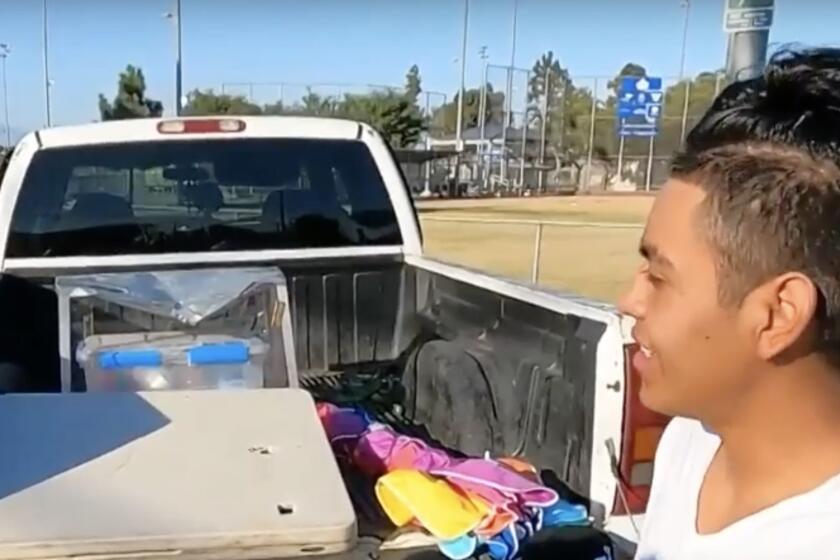Officials Admit Not Reporting Sewage Leaks
Huntington Beach officials conceded Monday night that they did not follow “the letter of the law” when they failed to report to the state that millions of gallons of sewage were leaking out of cracks and holes in downtown pipes.
The officials emphasized that drinking-water supplies were never jeopardized, for the contaminated waste was most likely trapped within ocean water under the downtown area. Huntington Beach draws its drinking water from underground supplies north of downtown.
“There is no safety concern here,” said Robert Beardsley, the city’s public works director.
Officials insisted that earlier tests proved the sewage leaks were not to blame for the contamination that forced the closure of the beach for two summer months in 1999. Still, newly elected City Council member Debbie Cook wanted to know why the city moved so slowly after discovering 6-foot holes in sewer lines in 1996.
“What surprised me is that the city didn’t do anything about it until 1999,” Cook said. “The sewage must be going somewhere, and if it’s not, then why do we even bother to fix the sewer lines?”
The California Regional Water Quality Control Board last week ordered the city to find and clean up any residue from sewage that has oozed from cracked and broken 80-year-old lines. City officials estimated in 1996 that 71,374 gallons of sewage had been leaking each day into surrounding soil, a figure the city now disputes.
The Riverside-based water board last week ordered city officials to submit a plan by Feb. 7 that identifies how they plan to trace bacteria from the leaked sewage. The water board wants the city to determine whether any sewage might have reached the ocean.
Beardsley told the City Council on Monday, “Certainly our sewer system is no older than many other cities’. But our sewer lines are close to the coast, and we do have a significant deterioration problem.”
The city generates 32 million gallons of sewage a day. Tests last year uncovered no evidence that leaking sewage had polluted the ocean, but state officials said the possibility could not be ruled out.
“The leaked sewage is discharged to ground water in areas where ground water could migrate to and impact the quality of near-shore ocean waters,” according to the three-page order signed by Gerard J. Thibeault, director of the Santa Ana region of the state water board. “The fate of the leaked sewage has not been determined.”
Eight 50-foot wells will be drilled downtown to sample the ground water. Those tests should be completed within three months, officials said. The city already has taken steps to fix its leaky lines. During the past two years, the city has spent $2.6 million reinforcing pipes in the downtown area. The city has identified an additional $6 million in sewer system needs.
Monday night, Councilman Ralph Bauer asked the city staff to draft a proposal to charge residents a sewage maintenance fee that would provide a steady revenue stream to pay for the repairs. City staff members proposed a sewer fee in 1996, but no action was taken. The concept surfaced again last summer, but council members rejected it.
More to Read
Sign up for Essential California
The most important California stories and recommendations in your inbox every morning.
You may occasionally receive promotional content from the Los Angeles Times.











